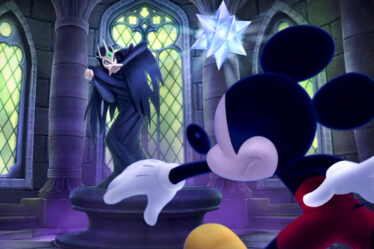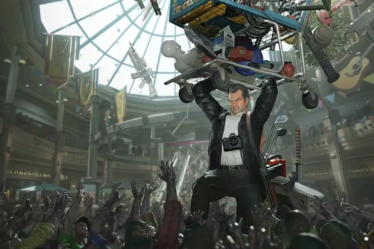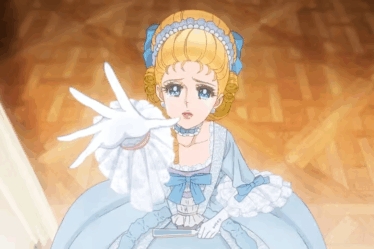
This article was originally published in Italian on GeekGamer.it in 2018.
In an era where the average gamer would buy anything to recapture the nostalgic hours spent during their (pre)adolescence, Square Enix brings a classic, turn-based JRPG to the increasingly rich Nintendo Switch lineup. It features a 3D graphic style that nods to the 16-bit era’s pixel art. And no, for once, I’m not talking about terrible remasters, mobile games, or tedious stories from Tokyo RPG Factory.
Octopath Traveler is a exquisitely packaged product from the creators of the Bravely series, known for Bravely Default and Bravely Second on the Nintendo 3DS. Leveraging the talent of Japanese software house Acquire, recognized for its quirky Akihabara-set JRPGs and the early Tenchu titles, Square Enix has finally found the right approach to reintroduce worlds rich with ’90s charm without resorting to practices disrespectful of their glorious past.
This is a turn-based RPG clearly inspired by the Romancing SaGa series—a JRPG brand less known in the West but quite beloved in Japan. Just like in the aforementioned franchise, Acquire’s title presents players with an expansive world full of secrets, where the protagonist’s mantle is constantly passed between eight heroes, each with their own narrative arc and unique gameplay variations. Fortunately, the developers kept in mind that, despite its retro charm, this game needed to be launched into a market vastly different from thirty years ago.
By choosing one of the selectable protagonists, players can dive into a fantasy world finely characterized by a level of writing significantly superior to what the genre has accustomed us to over the last decade. The Square Enix title’s universe doesn’t require heroes to unite for a common cause; instead, they help each other complete their (relatively simple) storylines without interfering with the current protagonist’s choices. The only interactions between party members are isolated to sporadic off-screen interventions triggered by the ‘+’ button, somewhat like the famous “skits” from the Tales Of series, but with a touch more ludonarrative dissonance. That said, there is an overarching vision: the individual stories—each characterized by a different tone depending on the protagonist’s background and the kingdom’s region—do hint at a much larger impending threat than initially presumed, but its resolution is reserved for a challenging post-game quest designed to test the player’s battle prowess.
I also believe it’s essential to discuss the crown jewel of this fine JRPG: the combat system. For almost two decades, Western critics have dismissed the typical structure of Japanese RPGs as “retrograde,” classically based on exploration interspersed with random encounters and skirmishes dominated by a succession of actions in static, sometimes confusing, menu screens. Octopath Traveler is a glorious slap in the face to these prejudices, allowing new generations to discover the eternal beauty of deep strategic planning. It prioritizes the ability to hybridize classes, unlock passive abilities, and innate skills over the automated acrobatics of a Final Fantasy XV, delivering some of the most satisfying turn-based JRPG battles I’ve encountered in years. After all, this is a video game developed by the skilled hands behind Bravely Default, and its pedigree is easily recognizable after a few hours of play, once your party expands and you can experiment with creating the ultimate warrior group.
World exploration, which involves large regions interconnected by paths, is made interesting by a considerable number of chests and various hidden areas. Octopath Traveler also boasts a rich cast of NPCs with whom you can interact differently depending on the characters in your party: based on their strength level, you can challenge them, steal from them, persuade them to sell rare items, inquire about them, or even recruit them into your party and summon them in battle to leverage their unique abilities. From this perspective, it’s admirable how the vast majority of this video game’s inhabitants have been given unique backgrounds and never-trivial dialogue lines, some of which subtly suggest solutions to many of the game’s numerous side quests.
This latest Square Enix exclusive for Nintendo Switch is also a proud example of the few JRPGs blessed with Quality of Life (QoL) elements (optional or not) that streamline the genre’s standardized form. These include indicators for main quest resolution (but not side quests), immediate healing for your heroes after a battle with status ailments or after a level up, and the immediate ability to teleport between previously visited cities without any penalties. And yes, you can also decrease the incidence of random encounters, but given the excellence of the battle system and how smoothly everything flows, it’s advisable to avoid doing so in the early stages of the adventure.
The graphic style adopted by Acquire and Square Enix for this title is unique and immediately recognizable. The company has utilized low-poly 3D modeling where low-resolution textures contribute to a retro aesthetic that perfectly complements the good—though not exceptional—pixel art characterizing characters and enemies during battles. The game does suffer from a certain overall static nature and noticeable monotony in environment design or dungeon complexity, which are indeed linear and devoid of puzzles. However, considering the product’s type and target audience, the adopted stylistic choices remain consistent.
The musical score, crafted by Yasunori Nishiki (famous in Japan for scoring the mobile game blockbuster Granblue Fantasy), is excellent and extremely inspired. The character voice acting, limited to the most important cinematic scenes, is definitely preferable in Japanese, as the entire English script (voiced or unvoiced) was unfortunately laden with Shakespearean archaisms that bear little resemblance to the tone of the original dialogues. The Italian translation, however, is more than good, capable of varying linguistic registers depending on the moment and speaking characters, enriching the world with a colorful and vibrant cast without creating caricatures trapped in regional dialects, unlike recent Dragon Quest translations.
Octopath Traveler could have easily ended up as just another sad attempt to capitalize on players’ childhoods. Instead, it’s an agile product, ready to be enjoyed by both home console enthusiasts and those seeking a solid JRPG that embraces the portable (and handheld) nature of Nintendo’s hybrid console. Recommended.


